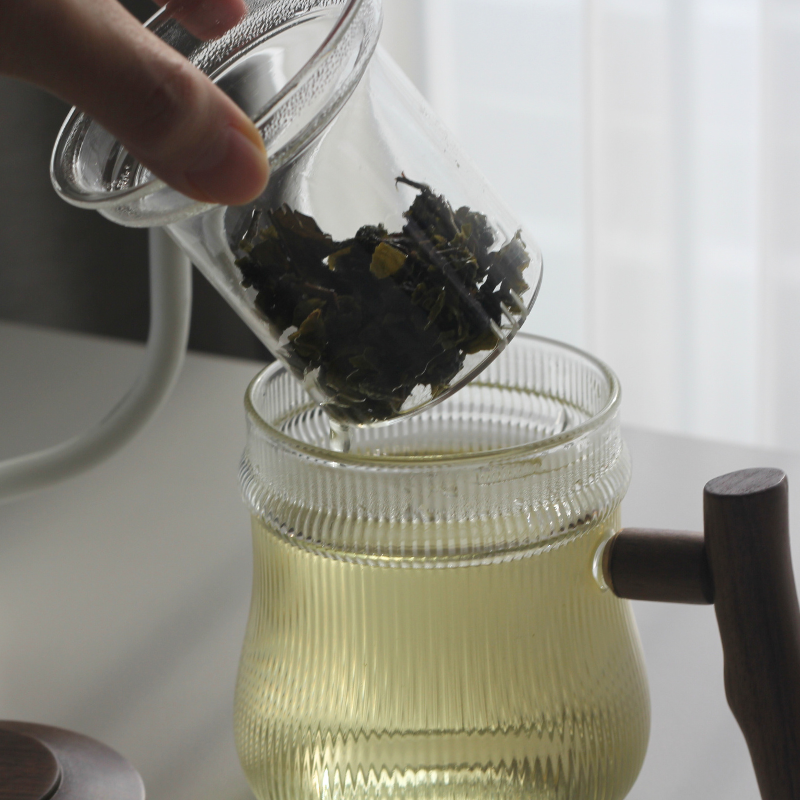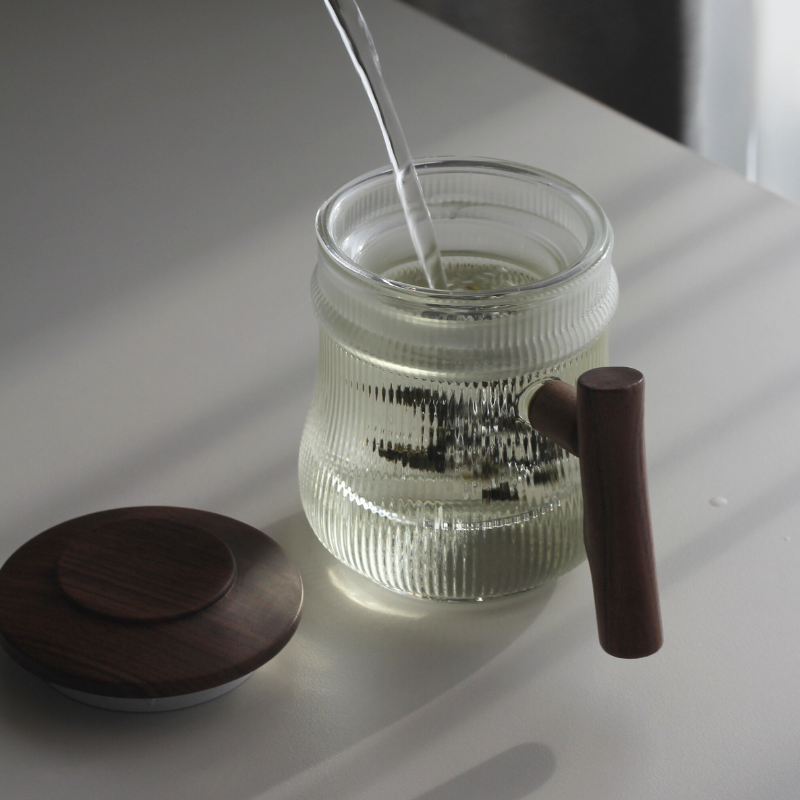TEA JOURNEY [15] | White Tea
You may have heard of "peach infused white tea" or have some assumption that since black tea is darker than green tea and has a stronger(?) flavor, white must be the opposite.
Ok, tea infused with peach flavors is great anyhow.
And, your assumptions is somewhat correct! White tea indicates the color of the tea and white tea does pair beautifully with stone fruits like peaches because it also has a subtle flavor profile with sweet, floral notes.
1. Characteristics of White Tea
White tea, known for its white fuzz (bai hao 白毫), delicate color, flavor, and aroma, has been renowned since ancient times. However, even within its country of origin, China, there has been ongoing debate about the precise definition and manufacturing methods of white tea.
The origin of white tea can be traced back to the Tang and Song dynasties in China. The historical records stated that the tea is harvested from white leaf tea trees that grew on cliffs. The tree's natural habitat made it hard to cultivate. The manufacturing process was also difficult, which made white tea all the more valuable and scarce.
In 1976, in a village in China's northern Fujian province, a revolutionary method of white tea production was developed, which differed from traditional methods. This innovative approach involved carefully drying the young leaves harvested in early spring under the sunlight and then heating them to reduce the remaining moisture.
Initially, any leaves from tea trees processed in the designated manner in the region were considered white tea. However, around 1885, only the young tea leaves and buds from the Da Bai cultivar, primarily used for green tea production, were classified as genuine white tea.

The production volume of white tea has steadily increased over time. In 2013, it showed a significant jump, reaching 11,000 tons, which was a 19.8% increase compared to the previous year.
This growth can be attributed to the popularity of the saying about white tea around 2010 that went "After one year it's a tea, after three years it's a medicine, and after ten years it's treasure." This spiked sales in Beijing then.
Of course, on top of this health craze, white tea's compressed disk form also contributed to making it easy to store and a great gift -- similar to Pu-erh tea.

White tea is known for its cooling nature, making it particularly enjoyable to drink during the summer. (Peaches also grow in summer -- see the connection?)
Some famous varieties of white tea in China include Bai Hao Yin Zhen (白毫銀針 Silver Needle), Bai Mu Dan (白牡丹 White Peony), Gong Mei (貢眉白茶), and Shou Mei (壽眉).
2. Traditional Process of White Tea Production
1) Plucking
For the highest quality Bai Hao Yin Zhen, only the unopened buds of the tea plant, which appear in early spring, are carefully plucked without any damage from wounds or pests. Depending on the plucking method, the tea can be classified as Bai Cha (white tea) or Bai Ye Cha (white leaf tea). Bai Cha involves plucking both buds and leaves and extracting the "ya" (芽 sprouts). The remaining tea leaves are used to produce Gong Mei. Due to the challenging nature of harvesting, the yield of white tea is very low. Approximately 4,500 tea leaves are needed to produce around 500 grams of tea per day.
Bai Hao Yin Zhen represents the pinnacle of Bai Cha, while Bai Mu Dan, Gong Mei, and Shou Mei represent the notable varieties of Bai Ye Cha.
Among them, Gong Mei is considered superior in terms of quality. Bai Hao Yin Zhen has a list of ten things to avoid during plucking, known as the "10 Buo Cai 十不採," which includes the following:
- Plucking on rainy days: Due to high moisture content (humidity)
- Plucking on dewy days: Due to high moisture content
- Leaves damaged by insects
- Dried buds: Indicates poor nutrition
- Leaves with bruises
- Diseased buds
- Purple buds: Indicates higher polyphenol content
- Empty buds: Lack of contents inside
- Open buds: Buds that missed the ideal plucking time
- Buds damaged by wind
2) Withering
Withering is the most important process in the production of white tea. It involves wilting the tea leaves and inducing gentle fermentation through oxidation enzymes.
There are two methods of withering: outdoor withering and indoor withering, both requiring attention to temperature and humidity. Outdoor withering is done by exposing the tea leaves to sunlight. Indoor withering is carried out using machines (dryers) or in a shaded area, and when tea leaves are withered in a shaded area, it is called "Moonlight White Tea" due to the absence of direct sunlight.
The withering process needs to be adjusted based on weather conditions and climate, determining whether it should be done indoors or outdoors and controlling the time accordingly.
3) Drying
In favorable weather conditions, tea leaves are naturally dried continuously. However, in unfavorable conditions, they need to be dried using heat.

3. Processing of White Tea: New Craft White Tea 新工藝白茶 (米針)
Traditional white tea is produced through the simplest method of plucking the leaves, withering, and drying, without any fixation or rolling process. Particularly, without fixation, the oxidation enzymes remain active.
On the other hand, Mizhen, a new type of white tea developed in China, undergoes withering followed by a light fixation process. As a result, it has a higher level of fermentation and a characteristic dark color compared to traditional white tea.
Traditional White Tea: Pluck → Wither → Dry
New Craft White Tea: Pluck → Wither → Fix → Dry

4. Types of White Tea
1) Bai Hao Yin Zhen (White Hair Silver Needle)
The exact history of Bai Hao Yin Zhen is uncertain, but it is said to have been first produced in 1796 in Fuding, Fujian, during the Qing Dynasty. Specifically, it is produced in Mount Taimu of Fujian.
Notable regions known for Bai Hao Yin Zhen production are Fuding and Zhenghe. The Bai Hao Yin Zhen produced in Fuding is called Fuding Da Bai Cha (福鼎大白茶), and the one produced in Zhenghe is called Zhenghe Da Bai Cha (政和大白茶), and it's been produced since 1889.
The distinguishing feature of Bai Hao Yin Zhen is its needle-like appearance, as it is made from the buds of the tea plant. Its name is derived from the fact that the tea resembles needle-like hair. It is considered a premium white tea, made only from the tender buds harvested in spring. The tea leaves have a white, downy appearance, resembling silver. When water is poured into a tea cup, the tea leaves stand up one by one, creating an elegant appearance as if flower petals are dancing up and down.
2) Bai Mudan (White Peony)
Although it was initially produced in Fuding since 1922, Zhenghe has been the primary production area for Bai Mudan.
Bai Mudan is made using the same processing method as Bai Hao Yin Zhen, including not only the buds but also the two leaves. It contributed to the popularization of white tea and is sometimes referred to as "White Black Tea" in Europe.
Only the tender leaves covered with white hair, including the buds and tea leaves, are used. The name is derived from the analogy of the white bud surrounded by green leaves to a peony flower.

With years of experimenting tea, some white teas aren't exclusively spring buds. For instance, this aged white tea is from Taiwan. Unlike the fuzzy needles, the leaves are large and even looks brittle!






![TEA JOURNEY [13] | Tea Tasting Terminology](http://tingeofsoul.com/cdn/shop/articles/IMG_3072.jpg?v=1686898175&width=1080)
Leave a comment